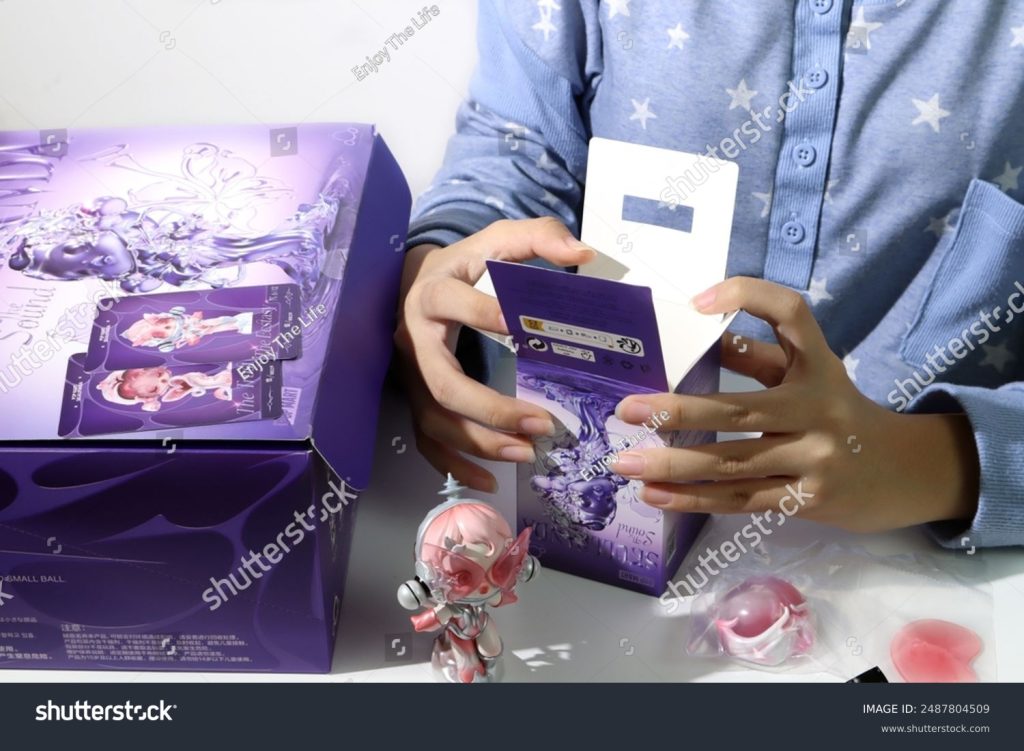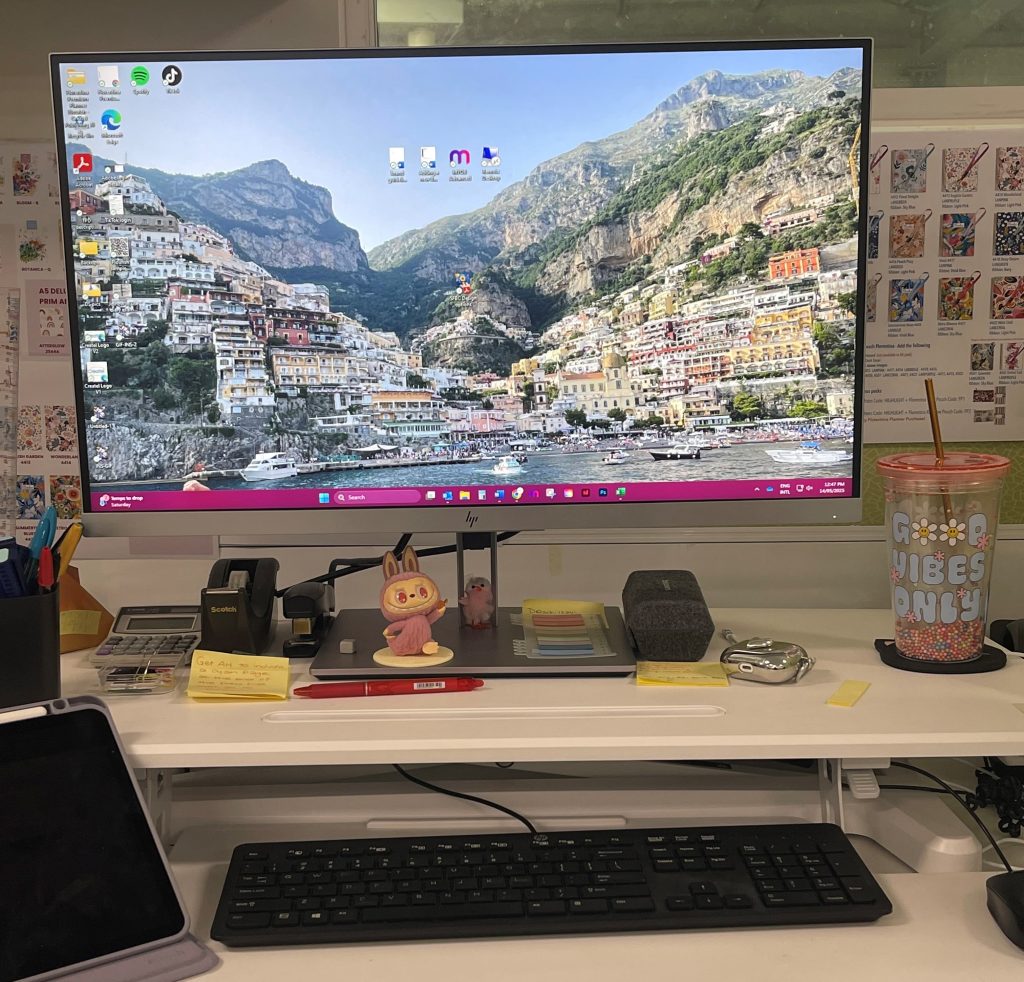Teachers and Trinkets:
The Psychology Behind Pop Mart Blind Boxes and Happiness

It starts with a box. Not just any box, but a beautifully designed, fully sealed, mystery package from Pop Mart. You know that this box contains something adorable, maybe even collectible. But what is it? That’s the kicker. You won’t know until you open it. For many teachers, especially those who work in high-stress environments, that is exactly the point.
Blind Boxes have boomed over the last few years. Series like The Monsters (Labubu), SKULLPANDA, and Cry Baby have become coveted, must-have trinkets that retail anywhere between $20-$50 each but can resell for over $1,000. Pop Mart alone was valued at over $13 billion AUD in recent years, with more and more stores popping up across Australian cities. But what is driving the love for these plush keychains or vinyl figures, especially amongst adults and teachers?
Let’s unpack the psychology, and yes, that pun was absolutely intended.
Firstly, what is Pop Mart and Why Are Their Collectables Popular?
Pop Mart is a Chinese company that is known for selling designer collectables in blind boxes. Each series is created in collaboration with artists such as Kasing Lung, XIONGMIAO (AKA SKULLPANDA), and Kenny Wong, who bring their art to life through figures, plush keychains, and other novelty items. [1]

The Anticipation: Dopamine and Delayed Gratification
The thrill of blind boxes lies in uncertainty. Psychologists refer to this as a variable reward system. The same kind of structure that makes pokie machines addictive[2]. When you purchase a blind box, your brain releases dopamine, the neurotransmitter that is associated with pleasure and reward, in anticipation of what you might get, not just when you get it.
Unlike gambling, buying a blind box doesn’t usually come with financial devastation or addiction. Instead, it taps into childlike wonder, surprise, and low-stakes joy. For me, personally, it feels like I am reconnecting with my inner child who can now use adult money to buy toys whenever I want. Yes, I realise how that sounds. Let’s move on.
Why Do Pop Mart Blind Boxes Appeal to Teachers in Particular?
Teaching is a profession where rewards are often delayed, sometimes for weeks, sometimes for years. You can spend your entire day giving and giving, without receiving much in return. For many educators, a blind box plush or figure becomes a tiny moment of joy they can gift to themselves. There is also something beautifully symbolic about opening something unknown. It mirrors the way teachers unwrap potential in every student every day. If you want to look at it that way, I guess.
Plus, many teachers are organisers and stylists at heart. A little Labubu perched on a desk next to their Teacher Planner in front of a stack of unmarked assessments? Instant joy and temporary distraction from your growing to-do list.

The Monsters Lazy Yoga Series front and centre to ‘spark joy’.
The Collection: Creating a Sense of Comfort in Chaos
As well as surprise, blind boxes also offer a small sense of structure and predictability in a world (or school) that seems increasingly chaotic. You don’t know what’s in the box, but you do know that it is one of six (or so) options. That small certainty, paired with the urge to compete a set, gives our brains something to focus on. Collecting provides a sense of control, progress, pride, and meaning[3].
Just ask a teacher (or me) who is trying to collect the Labubu series. Even though the chase can be incredibly frustrating (think waiting in line outside of a Pop Mart store while the staff slowly unpack their stock and no one tells you what will be in the stock boxes, so you’re spending hours in line not knowing if the series you want will even be available, let alone if they’re allowed to sell them to you. Yes, you read that right, allowed to sell them to you.) There is something so unbelievably rewarding about finally securing the blind boxes that you’re after. It also helps that the characters themselves, like Labubu or Dimoo, are emotionally expressive and thoughtfully designed to appeal to the psychology of cuteness[4]. The whole experience from unboxing to wearing or displaying your toys taps into feelings that are reminiscent of childhood and nostalgia.

Micro-Moments of Happiness Matter
Mental health experts often talk about ‘micro-moments of joy’ – small, positive experiences that help buffer stress and build resilience[5]. For many teachers who juggle classroom and student management, marking, planning, and administration tasks, a little trinket that sparks joy, even if only for a small moment, can lift the mood at the end of a long day.
Even the process of finding a Pop Mart store, hoping they have what you want in stock, choosing a box, feeling the weight, and guessing the figure inside becomes an exciting and somewhat mindful ritual, not unlike drinking a cup of coffee you’ve been dying for or putting on your favourite playlist before morning yard duty.
Sharing Joy
Interestingly, blind boxes are also a way for teachers to connect with students and their colleagues. Students often know Pop Mart too, and thanks to social media, can recognise the popular characters and understand the blind box process. It becomes a conversation starter, a chance to bond over a shared interest outside the curriculum.
Among teacher friends (and even between myself and my colleagues here at Createl), sharing or trading doubles creates a social connection of mutual appreciation, generosity, and camaraderie.
Final Thoughts
In a profession where happiness is sometimes longingly searched for in the little things, blind boxes offer something strangely profound: hope, surprise, and a reminder that the small joys still matter. Whether you’re completing a collection or just treating yourself after a tough week in the classroom, these little vinyl or plush figures are more than just something cute to look at – they’re a way to reclaim moments of wonder and excitement. So, next time someone asks why you, a grown adult and professional, are excited about a tiny monster in a box, you can just smile and say, ‘Because it makes me happy.’
References:
[1] Pop Mart Australia, About Pop Mart. 2025 Pop Mart Australia. https://au.popmart.com/pages/about-pop-mart?srsltid=AfmBOopfpCOa-PM6Dqu4iB4FgOJmM5Ep2veLVw1ppeGfmIGhfo0e5GU8
[2] Schults, W. Neuronal Reward and Decision Signals: From Theories to Data. Psychological Reviews, 853-951, 2015. https://journals.physiology.org/doi/full/10.1152/physrev.00023.2014
[3] Spaid B.I. Exploring Consumer Collecting Behaviour; A Conceptual Model and Research Agenda, Journal of Consumer Marketing, 637-648, 2018.https://epublications.marquette.edu/cgi/viewcontent.cgi?article=1277&context=market_fac
[4] University of Oxford, How Cute Things Hijack Our Brains and Drive Behaviour, 2016, https://www.ox.ac.uk/research/how-cute-things-hijack-our-brains-and-drive-behaviour
[5] Fredrickson, B.L. The Role of Positive Emotions in Positive Psychology. American Psychologist, 218-951, 2001. https://pmc.ncbi.nlm.nih.gov/articles/PMC3122271/
Curious about other ways you can bring happiness into your classroom? Read our latest article on How Dopamine Dressing Will Positively Impact Time in the Classroom




Leave a Reply